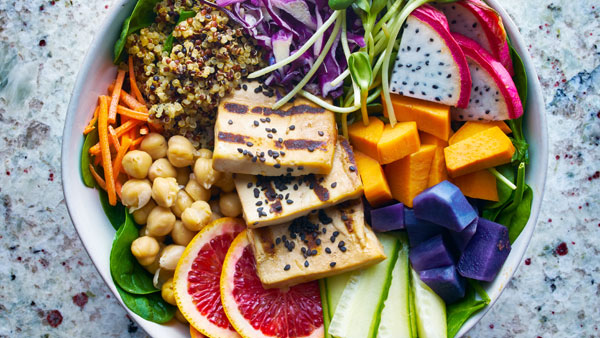How Health and Healthy Planet Concerns Drive Dining Choices

Burger King’s recent announcement that it’s testing the Impossible Burger, a plant-based alternative to the Whopper, symbolizes a seismic shift in the way Americans view food. It’s just the latest maneuver by a restaurant chain to capture the growing demand for menus and restaurants perceived as healthier, cleaner and more sustainable.
In fact, 40% of consumers say their definition of health has changed over the last two years. Rather than obsessing over calories, carbs and fat, according to Technomic’s 2018 Healthy Eating Consumer Trend Report, diners are proactively seeking specific health benefits and nutrients along with real and natural ingredients.
Consumers’ interest in a healthier, more sustainable dining experience has fueled the rise of several guest demographics that should be on restaurant operators’ radar.
Flexitarians
These individuals tend to follow a mostly vegetarian diet but don’t completely shun seafood, chicken and other animal protein sources. They welcome a mixed menu that provides satisfying vegetarian choices along with alternatives.
Clean eaters
This category of customers, who favor simply prepared foods that are free from artificial additives, coloring, flavoring and GMOs, has inspired quite the buzz. Panera and other chains have responded to this trend by revamping their menus and replacing many potentially controversial ingredients, but it’s not an easy process. Transparency is key here. Full disclosure of ingredients-already a requirement for many restaurants-is a step in the right direction.
Functional foods fans
Unlike clean-eating advocates, who prefer meals without certain characteristics, these health-focused diners actively seek out ingredients purported to provide health benefits-often from whole foods. This category involves choices such as high-protein shakes, bowls and smoothies; dishes that contain superfoods such as blueberries, broccoli and salmon; “Buddha bowls” built around ingredients such as ancient grains, kale, hemp and chia seeds; and beverages such as kombucha and green tea. Highlighting these foods on the menu, either by devoting a special section to them or through dishes with names like “power” or “superfood”-and including ingredients that provide those attributes-is a good way to win over customers in this category.
Healthy planet advocates
Concerns about sustainability drive many diners’ restaurant decisions, as well as potential employees’ sentiments about working in a restaurant, especially among millennials. A number of strategies can support a restaurant’s sustainability profile, from committing to responsibly caught seafood and relying on local suppliers as much as is practical, to keeping food waste to a minimum, adopting energy-friendly operations and recycling. The growth of delivery and takeout has challenged even the most committed restaurants to keep their commitment to a healthy planet, but new, greener alternatives are available. Instead of standard disposables, which take a long time to decompose, restaurants can switch to recyclable and biodegradable products like Vio¬Æ biodegradable* cups, food containers, lids and straws from WinCup.
Not every restaurant can appeal to every consumer’s tastes and preferences. But evolving menus and operations to satisfy the growing ranks of customers who choose restaurants that reflect their health or environmental concerns is a shrewd strategy to ensure long-term success.



